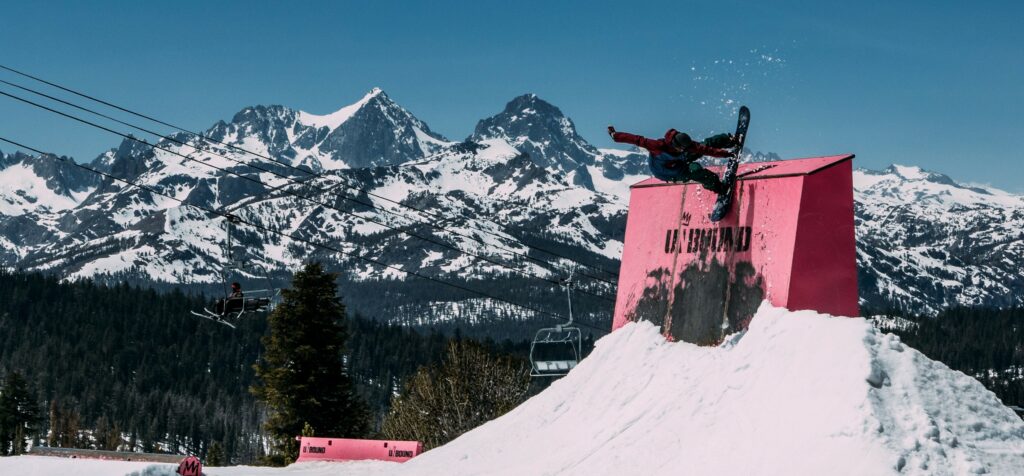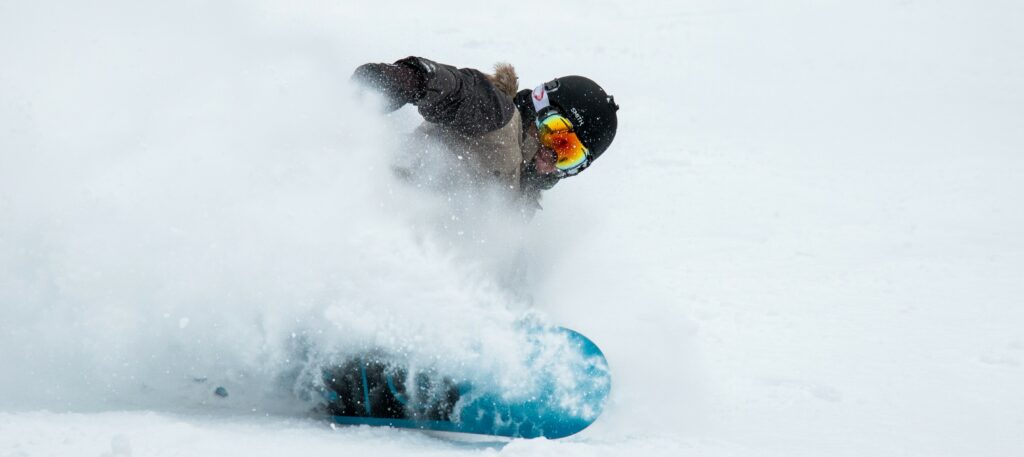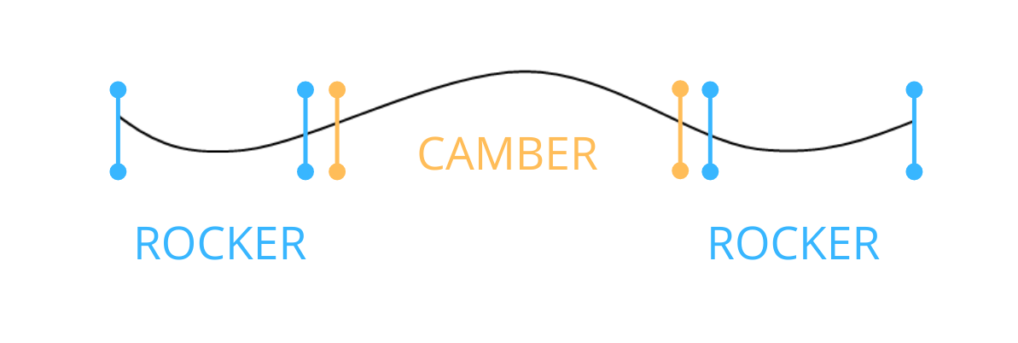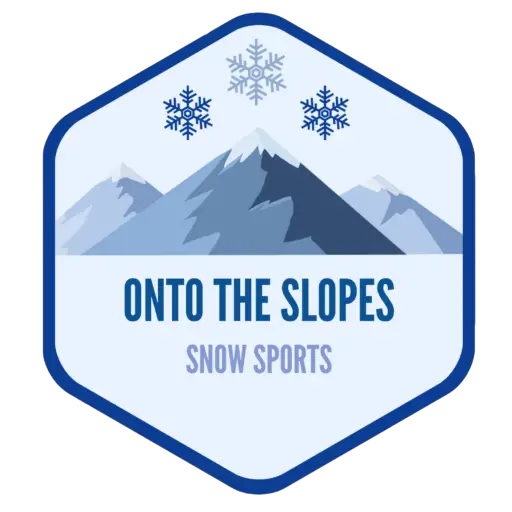If you’re in the market for a snowboard then you’ll know that one of the first things you’ll need to decide is which kind of snowboard you want. Two popular types of snowboard are all-mountain and freestyle (park), but what’s the difference between them?
In this article I’ll be directly comparing freestyle and all-mountain snowboards so you can figure out which is the best option for your style of snowboarding.
Freestyle (Park) vs All-Mountain Snowboards
Freestyle snowboards are designed to be used for performing tricks in the park whereas all-mountain snowboards are designed to be used on all types of terrain for different styles of snowboarding. All-mountain snowboards are typically stiffer and have more camber compared to freestyle/ park snowboards.
| Freestyle/ Park Snowboard | All-Mountain Snowboard |
| Designed to be used in the park | Designed to be used on all terrains |
| Not suitable for freeriding | Can be used for freeriding |
| Soft-moderate flex (4 or less) | Moderate flex (4-7) |
| Twin-tip shape | Twin-tip or directional shape |
| Usually shorter and wider | Usually longer and slimmer |
Freestyle/ Park Snowboarding
Freestyle snowboarding is a type of riding that involves performing tricks and usually occurs in the park area of the ski resort. This type of snowboarding uses rails, boxes, ramps and jumps to perform tricks and requires a specific type of snowboard.
Freestyle snowboards, also known as park snowboards have a softer flex compared to other types of snowboard. This usually equates to a flex rating of 2-4. This makes them easier to manipulate and turn which is vital for freestyle riding. Soft snowboards also make it easier to land small jumps.
If the board is used for larger jumps then a slightly stiffer flex to improve landing stability.
These types of snowboards also have a twin-tip shape which means they are symmetrical allowing the rider to switch and ride the board the opposite way.
Some park boards have an “asymmetrical twin tip” design which means there is a difference between the height of the toe and heel edge which helps the rider to balance on their heels. However, you won’t find a directional freestyle board.
Other characteristics of freestyle/ park snowboards include a slightly shorter length and some rocker to the profile which makes it easier to manipulate the board when performing tricks. They also usually have a wider waist compared to other types of board to improve stability when landing.

All-Mountain Snowboarding
All-mountain snowboards need to be able to perform on a wide range of terrain and are capable of being used in the park, on piste and on ungroomed/ powder territory.
They are the most versatile type of snowboard available which means they have moderate characteristics in terms of width, flex and camber profile.
Most all-mountain snowboards have a moderate flex rating (between 4 and 7) which means they are firm enough to land jumps and have good edge hold/ grip, but not too firm for powder and still are easy to turn and control.
The camber profile varies between all-mountain snowboards but most typically have some camber and rocker which allows them to work on powder and on-piste.

Comparing Snowboard Characteristics
Now we’ve been through the basics, let’s directly compared the following characteristics of freestyle and all-mountain snowboards:
- Flex
- Camber Profile
- Direction and Shape
- Length
- Width
Flex
All-mountain snowboards typically have a higher flex rating meaning they are stiffer compared to freestyle/ park snowboards.
This is because all-mountain snowboards need to perform well on-piste and be suitable for freeriding which is a more aggressive style where the extra stiffness is needed for stability at high speeds. Freestyle snowboards are softer to make it easier to perform tricks.
- All-Mountain Snowboard Flex: usually between 4 and 7
- Freestyle Snowboard Flex: usually less than 4
Check out my article comparing soft and stiff snowboards to learn more about flex ratings and why they matter.
Camber Profile
There are several different types of camber profile that both all-mountain and freestyle snowboards use. However, in general most all-mountain snowboards have more camber and freestyle boards have more rocker.
Having more rocker is useful in the park because it makes turns feel easier, whereas having more camber is useful on-piste to improve edge hold and stability at higher speeds.

Direction and Shape
Freestyle/ park snowboards have a twin-tip shape which allows them to be used in both directions which is very important when performing tricks.
All-mountain snowboards can have either a twin-tip or directional shape depending on preference, however directional all-mountain boards are more geared for freeriding and on-piste terrain compared to in the park.
Length
When deciding what length of snowboard you need, you’ll need to figure it out according to your height. However, it’s worth noting that freestyle snowboards are typically slightly shorter than all-mountain snowboards.
Shorter snowboards are easier to turn and manipulate which makes them better for performing tricks in the park. Longer snowboards suit more aggressive, high-speed riding as they feel more stable.
Width
The width of your snowboard should be decided according to the size of your feet to ensure there isn’t too much overhang which results in toe/ heel drag. However, like with the length of the snowboard, the width also varies slightly depending on the type.
Typically, park/ freestyle snowboards are slightly wider compared to all-mountain boards as it gives them more stability which is useful for landing tricks. Narrower snowboards on the other hand feel faster on-piste.
Check out my comparison between wide and narrow snowboards to figure out what width is best for you.
Should You Buy an All-Mountain or Freestyle Snowboard?
It really comes down to what kind of terrain you’re going to be using your snowboard on.
If you want to use your snowboard on-piste or on ungroomed territory then you’ll be best off with an all-mountain snowboard which is more versatile compared to a freestyle snowboard. Whilst it is possible to use a freestyle snowboard on-piste, it will usually not be stiff enough to get the best performance.
However, if you are using your snowboard mostly in the park and occasionally want to go on-piste, then a freestyle snowboard is your best option. Whilst it is possible to use an all-mountain snowboard in the park, it will usually be too stiff which can make tricks more difficult.
